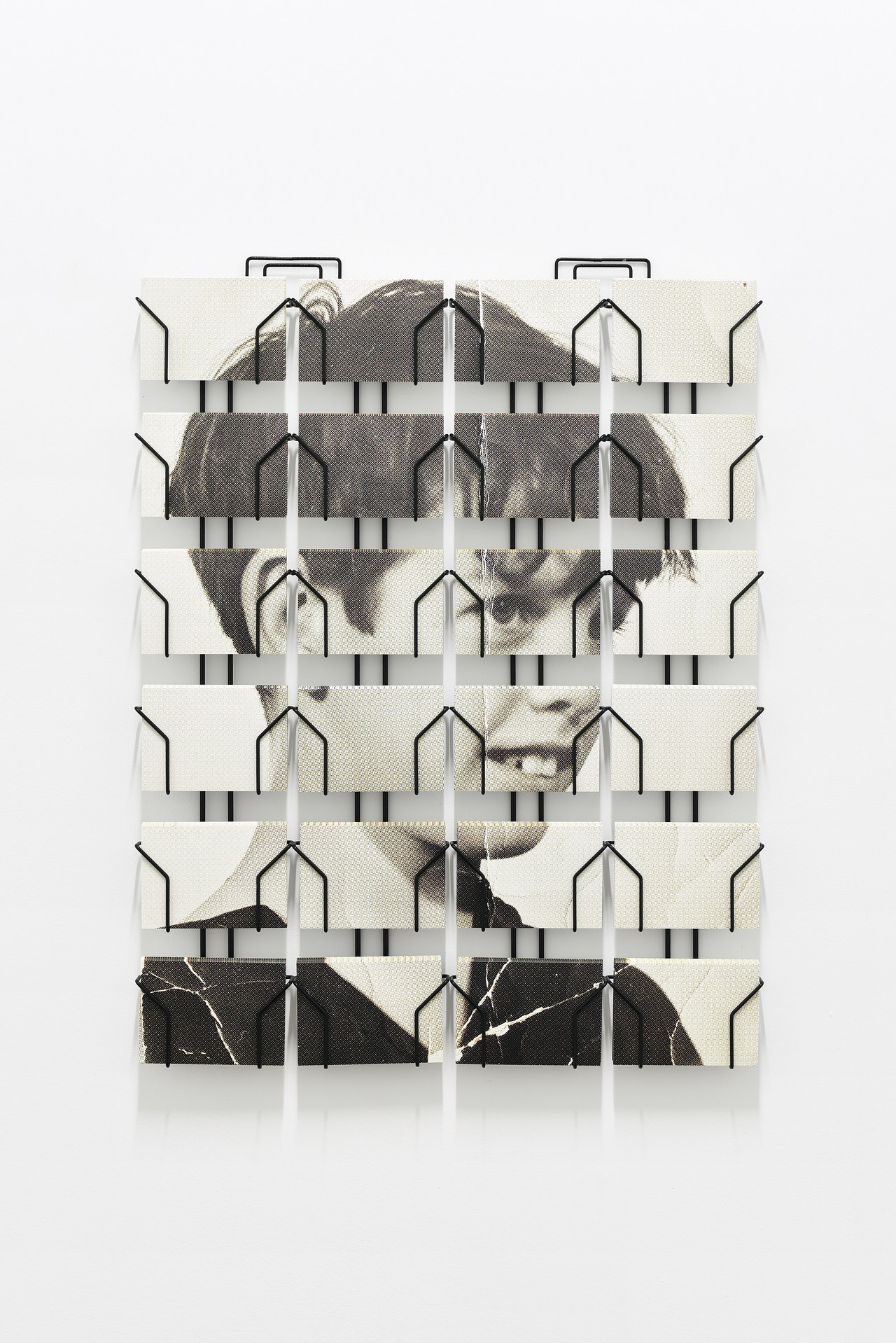BC/AD
2008 - Film & Video (Film & Video)
59 min 36
Ian Breakwell
“BC/AD” (Before Cancer, After Diagnoses) is a video of photographs of the artist’s face dating from early childhood to the month before he died, accompanied by the last diary entries he wrote from April 2004 to July 2005 (entitled “50 Reasons for Getting Out of Bed”), from the period from when he lost his voice, thinking he had laryngitis, through the moment he was diagnosed with lung cancer and the subsequent treatment that was ultimately, ineffective. The diary entries are at once poignant, ironic, laced with gallows of humor, with his continued eye for the little incidents in life, interweaving the past with his experience of the present. The morphing of the portraits—the eyes and sight remaining leveled—is haunting, beginning with very blurry images of childhood and ending with a pin-sharp photograph of Breakwell the month before he died. As the tumor grows so does Breakwell’s introspection, as he meditates the horizon of his life, the randomness of fate and the meaning of time to someone in his condition. The quality of Breakwell’s voice changes throughout the course of the audio recording as he struggles to project, while the sound of his inhaling breath indicates a great difficulty of breathing. It was recorded in one take: 1 hour and 55 minutes. The illness thus manifests throughout the soundtrack. In confronting his mortality, “BC/AD” is a poignant work, at once poetic and mundane. It is an act of defiance that encapsulates many aspects of Breakwell’s approach to making art.
Ian Breakwell was a leading British conceptual artist active in the dematerializing of the hierarchy of modernity in the 1960s. Combining painting, drawing, printmaking, photography, film, collage, video, audio-tape, slide, digital imaging and performance, Breakwell’s work significantly contributed to considering art as documentation of a moment, rather than a marketable fine art piece. Initially influenced by Surrealism, Breakwell was best known for his observation of what he called ‘little epiphanies’ he observed around him and that he recorded in his diaries from the late 1960’s, which he exhibited as art works. Until 1980, the diaries often took on a visual format but from the 1980s onwards they took a mostly verbal format. One of the most celebrated of the diaries is the Walking Man Diary (1979) where Breakwell photographed a man who walked past his studio everyday on a circuitous, continuous route with no purpose. Alongside the photographs he recorded imagined conversations of people observing him. The photographs were arranged in a grid and presented as a diary.
Colors:
Related works featuring themes of: » Conceptual Art, » British

© » KADIST
Andrew Grassie
2009In 2008, Grassie was invited by the Whitechapel Gallery to document the transformation of some of its spaces...

© » KADIST
Martin Creed
2003This photograph of Martin Creed himself was used as the invitation card for a fundraising auction of works on paper at Christie’s South Kensington in support of Camden Arts Centre’s first year in a refurbished building in 2005...

© » KADIST
Tony Labat
2008Commissioned by the San Francisco Museum of Modern Art and riffing on the “I Want You” army recruitment campaigns of the 1930s and 1940s, Labat asked Bay Area residents to interpret the slogan and make their own demands of the public in a series of live performance auditions...

© » KADIST
Chris Wiley
2012Architectural details become abstracted renderings in Chris Wiley’s inkjet prints 11 and 20 (both 2012)...

© » KADIST
Simon Fujiwara
2016Masks is a series of abstract paintings by Simon Fujiwara that together form a giant, fragmented portrait of German Chancellor Angela Merkel’s face...

© » KADIST
Anthony McCall
1973The film Line Describing a Cone was made in 1973 and it was projected for the first time at Fylkingen (Stockholm) on 30 August of the same year...

© » KADIST
Toby Ziegler
2007Wagon Wheel is a work with a fundamental dynamism that derives both from the rotating movement of the elements suspended on poles and the kicking of the legs of the figure...

© » KADIST
Anthony McCall
1974This score is a graphic record of the detailed choreography of one of Anthony McCall’s Landscape for Fire performances...












